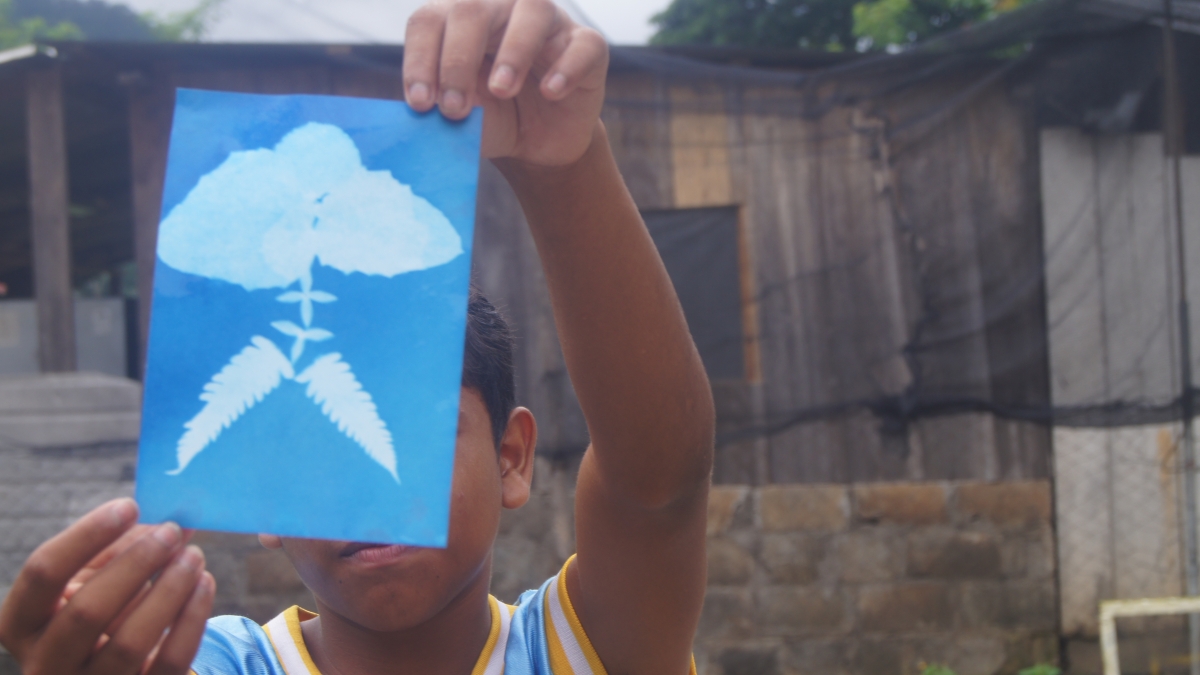Writing with light: Teaching youth to picture sustainability through photography

Coconut palms, mangroves, orchids, pine trees, tropical broadleaves; these are just some species of plants young Honduran students captured with photography during a workshop led by Arizona State University artist and professor Julie Anand.
The art workshop was designed by Anand, in partnership with the Honduran nonprofit, Guaruma. Based near the northern Río Cangrejal watershed, Guaruma inspires environmental awareness in local youth through after-school programs in digital photography and computer sciences. Photography being her specialty, Anand wanted the students to “interact with their environment and create something in a way they haven’t before.”
The word photography translates to “light writing,” but students using digital photography don’t inherently understand that when they create a picture, they are measuring light. So to teach the Honduran youth how photography scientifically and physically works, Anand had them create cloth cyanotype prints using water and sunlight.
“We created cyanotypes because they are very elemental – only needing sunlight, water and observation of natural patterns,” says Anand, a senior sustainability scholar in ASU’s Global Institute of Sustainability and an associate professor in ASU’s School of Art. “I wanted the students to experience light-sensitive materials and experience the science of exposure.”
The students explored their surroundings and found native plants to place on pieces of chemically treated cloth, then set their artwork out in the sun. After removing the plants and dipping the cloth in water, the students watched as the cloth turned blue, leaving white silhouettes of their chosen plants.
“My favorite part of the trip was the sound the kids made when they saw their photographs appearing in the water,” Anand says. “It was completely magical for them. Through photography classes at Guaruma, the children learn to understand their place, to be wide awake in it and to love it.”
The students also constructed mundos pequeños, “small worlds” in Spanish, on top of large buttons with found materials and modeling clay. These miniature versions of the world allowed the students to envision microcosms within ecosystems.
“They could see, for example, how pieces of aquarium gravel turned into a boulder on the button,” Anand says. “It is a playful exercise, but it really asks people to think about scale and reflect on the worlds within our world. Artists create experiences for people. Experience is perhaps the greatest teacher.”
In September, ASU’s Step Gallery will showcase the resulting artwork from the workshop in an exhibit titled "Río Canción," or “River Song” – a name reflecting the workshop’s location and the Honduran communities’ connection to the Río Cangrejal watershed. The gallery will house a tapestry made from the cloth cyanotypes, the small world pieces and digital prints from the students’ daily photographic explorations at Guaruma.
“I think people will be impressed with the vision these very young people have,” Anand says. “They will be able to see how the students were able to fully engage themselves in their world through seeing the small things and the intricate web of life.”
The Step Gallery will showcase the exhibit September 16-20 and will host an opening reception from 6 to 8 p.m., Sept. 17. Both the workshop and exhibit are part of a grant funded by the Global Institute of Sustainability. Sales of the artwork will be distributed to Honduran primary and secondary schools.